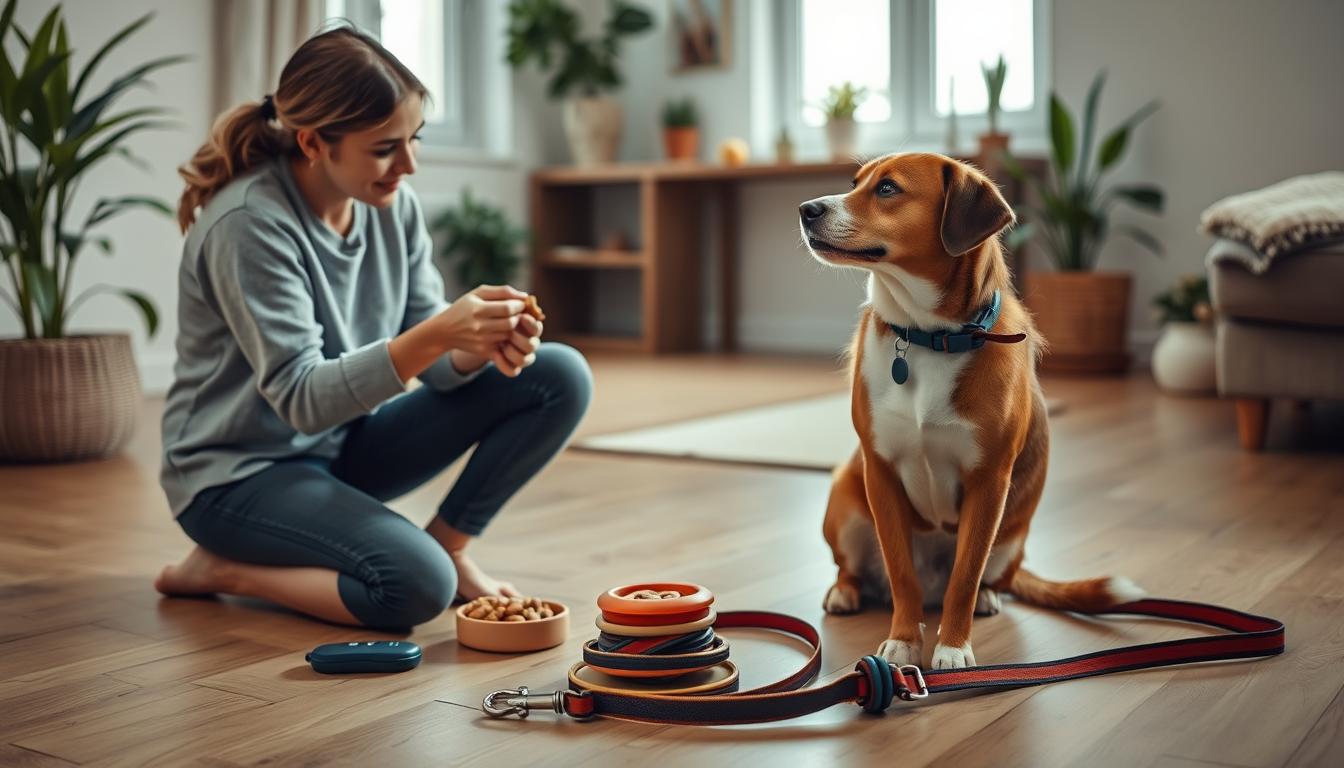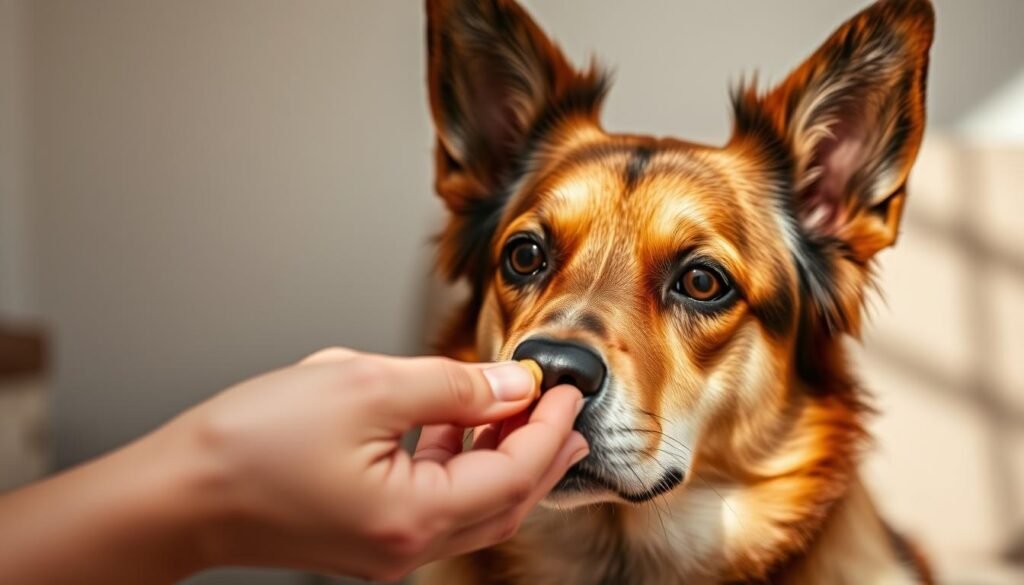Did you know that a well-trained pet is not just a joy to be around, but it also strengthens the bond between you and your furry friend? Effective pet training can transform your companion’s behavior, making them more obedient and affectionateWith the right training techniques, you can address behavioral issues and enhance your relationship with your pet. Our expert Pet Training Tips will guide you through the process, providing you with the tools and knowledge needed to achieve remarkable results.
Key Takeaways
- Understand the importance of positive reinforcement in pet training.
- Learn how to establish clear communication with your pet.
- Discover effective techniques for addressing common behavioral issues.
- Find out how to create a training plan tailored to your pet’s needs.
- Explore the benefits of consistent training and patience.
Understanding Your Pet’s Behavior
Effective dog training begins with a deep understanding of your pet’s behavioral patterns. Dogs repeat behaviors that earn them rewards, so it’s essential to understand what your dog finds rewarding. This understanding forms the basis of successful dog obedience training.
Key Signs of Understanding
When your dog understands what you’re teaching them, you’ll notice several key signs. These include maintaining eye contact, responding promptly to commands, and displaying relaxed body language. Positive reinforcement methods play a crucial role in encouraging these behaviors.
Some common indicators that your dog is grasping the training include:
- Quickly responding to known commands
- Displaying a willingness to learn new commands
- Showing excitement or eagerness during training sessions
Common Behavioral Issues
Despite the best training efforts, common behavioral issues can arise. These may include barking, chewing, or disobedience. Understanding the root cause of these behaviors is crucial. Often, these issues stem from boredom, anxiety, or a lack of clear communication.
| Behavioral Issue | Possible Cause | Solution |
|---|---|---|
| Barking | Boredom or Anxiety | Increase exercise and mental stimulation |
| Chewing | Teething or Boredom | Provide appropriate chew toys and increase supervision |
| Disobedience | Lack of Clear Communication | Use consistent commands and positive reinforcement |
By recognizing these issues and applying positive reinforcement methods, you can address the root causes and improve your dog’s behavior. This not only enhances the training process but also strengthens the bond between you and your pet.
Setting Realistic Training Goals
The key to successful pet training lies in setting practical and attainable goals. By doing so, you can create a structured training plan that suits your pet’s needs and abilities.
When it comes to training your pet, it’s essential to differentiate between short-term and long-term goals. Short-term goals are immediate objectives that you want your pet to achieve in a short span, such as learning to sit or stay. On the other hand, long-term goals are more complex behaviors that require time, patience, and consistent training, like walking on a leash without pulling or responding to commands in distracting environments.
Short-term vs. Long-term Goals
Understanding the distinction between short-term and long-term goals is vital for a successful training regimen. Short-term goals provide a sense of accomplishment and motivation, while long-term goals help you focus on the bigger picture. For instance, if you’re teaching your puppy to walk on a leash, a short-term goal might be to get them comfortable wearing a harness, while a long-term goal is to have them walk beside you without pulling.
Effective puppy training techniques often involve breaking down complex behaviors into simpler tasks. This approach makes the training process less overwhelming for both you and your pet. By achieving short-term goals, you build a strong foundation for tackling more challenging long-term objectives.

Measuring Your Progress
Measuring progress is a critical aspect of pet training. It helps you understand what’s working and what areas need improvement. You can measure progress by keeping a training journal, setting specific milestones, and using behavior modification techniques to adjust your training strategy as needed.
Regularly assessing your pet’s progress allows you to make informed decisions about their training. It’s also a great way to stay motivated and celebrate the small victories along the way. By combining short-term achievements with long-term vision, you can create a comprehensive training plan that yields lasting results.
By incorporating these strategies into your training routine, you’ll be well on your way to achieving your pet training goals. Remember, patience and consistency are key to successful training.
Essential Training Techniques
Training your pet effectively requires a deep dive into the most impactful training techniques available. A well-trained pet is not only a joy to be around, but it also strengthens the bond between you and your furry friend.
Positive Reinforcement Explained
Positive reinforcement is a powerful training method that focuses on rewarding good behavior rather than punishing bad behavior. This approach encourages your pet to repeat the desired action, as they associate it with a positive outcome.
To apply positive reinforcement effectively, you need to identify the rewards that motivate your pet. These can be treats, praise, or playtime. For instance, when your dog sits on command, rewarding them with a treat reinforces the behavior.
Clicker Training Basics
Clicker training is another effective technique that uses a distinct sound to mark desired behaviors. The clicker is a tool that helps your pet understand exactly what they did right, making it easier for them to learn.
To start clicker training, begin by associating the clicker sound with a reward. Click the device and immediately give your pet a treat. Once they’ve made this connection, you can use the clicker to mark good behavior, followed by a reward.
Leash Training Essentials
Leash training is crucial for walks and outings with your pet. To provide effective leash training advice, it’s essential to start with the right equipment, such as a comfortable harness and a suitable leash.
Begin leash training in a controlled environment, such as your home or a quiet area, to minimize distractions. Reward your pet for walking beside you without pulling on the leash. Consistency and patience are key to successful leash training.
By incorporating these positive reinforcement methods and training techniques into your daily routine, you’ll be well on your way to raising a well-behaved and obedient pet.
Creating a Consistent Routine
Consistency is key to successful pet training, and it all starts with a daily routine. By establishing a regular schedule, you can help your pet feel more secure and develop good behavior.
Daily Training Schedules
A daily training schedule helps in housebreaking and reinforces good behavior. It’s essential to allocate specific times for training, feeding, and play. For instance, taking your dog out for a walk at the same time every morning can help with housebreaking.
- Start with short training sessions and gradually increase the duration.
- Be consistent with commands and hand signals.
- Use positive reinforcement techniques, such as treats and praise.
Incorporating Socialization
Socialization is a critical aspect of pet training. It involves exposing your pet to various environments, people, and other animals to help them become confident and calm in new situations. For cat behavior tips, it’s crucial to socialize them from an early age to reduce anxiety and aggression.
- Introduce your pet to new environments gradually.
- Arrange playdates with other pets.
- Expose your pet to different sounds and sights.
By incorporating these elements into your daily routine, you can significantly improve your pet’s behavior and strengthen your bond with them.

The Importance of Patience
Remaining calm and patient is crucial for effective behavior modification techniques in dog obedience training. It’s easy to get frustrated when your pet doesn’t understand what you want, but patience helps prevent frustration and ensures a more positive training experience.
Training a pet is a process that takes time, and it’s essential to manage your expectations. Understanding that progress may be slow and that setbacks are a normal part of the training process can help you stay calm and focused.
Managing Expectations
One of the key aspects of managing expectations is setting realistic goals. This involves breaking down larger goals into smaller, achievable steps. For instance, if you’re teaching your dog to sit, start by rewarding them for remaining calm, then gradually introduce the command.
It’s also crucial to understand that every dog is different, with unique personalities and learning speeds. What works for one dog may not work for another, so patience and flexibility are vital.
Techniques for Staying Calm
Staying calm under pressure is a skill that can be developed over time with practice. Techniques such as deep breathing, taking breaks during training sessions, and maintaining a positive attitude can help. It’s also beneficial to celebrate small victories along the way, as this can help keep you motivated and engaged in the training process.
To further illustrate the importance of patience, consider the following comparison of training approaches:
| Training Approach | Characteristics | Outcome |
|---|---|---|
| Patient Training | Slow, consistent, positive reinforcement | Long-term behavioral change |
| Impatient Training | Fast, punitive, inconsistent | Short-term compliance, potential for anxiety |
By adopting a patient approach to dog obedience training, you can create a more positive and effective training environment. This not only benefits your pet but also enhances your relationship with them.
In conclusion, patience is a cornerstone of successful pet training. By managing your expectations and staying calm, you can navigate the challenges of training with confidence and achieve your goals.
Tools and Resources for Training
The journey to a well-behaved pet begins with the right training tools and resources. Having the correct equipment and information can make a significant difference in your pet training journey, helping you to achieve your goals more efficiently.
Recommended Training Tools
When it comes to training your pet, certain tools can be particularly helpful. Training treats are a great example; they’re not only a reward but also a way to motivate your pet during training sessions. Other useful tools include:
- Clickers for clicker training
- Training pads or newspapers for housebreaking
- Leashes and harnesses for walking and leash training
- Interactive toys for mental stimulation
Using these tools effectively can enhance your training sessions and improve your pet’s response to commands.

Useful Online Resources
In today’s digital age, there are numerous online resources available to support pet owners in their training journey. From video tutorials to online forums, these resources can provide valuable guidance and support. Some useful online resources include:
- Websites dedicated to pet training tips and techniques
- Forums and communities where pet owners can share their experiences
- YouTube channels focused on puppy training techniques and pet behavior
- Online courses and training programs designed for pet owners
By leveraging these resources, you can gain a deeper understanding of your pet’s needs and develop effective training strategies.
Addressing Specific Issues
Helping your pet overcome anxiety and aggression requires understanding, patience, and the right training techniques. Pets often exhibit behaviors that are challenging to manage, but with the correct approach, you can help them lead a more balanced life.
Overcoming Anxiety in Pets
Anxiety in pets can manifest in various ways, such as excessive barking, destructive behavior, or avoidance. To address this, you can employ behavior modification techniques that help your pet feel more secure and calm. One effective method is gradual exposure to the source of anxiety, paired with positive reinforcement.
Desensitization and counterconditioning are techniques that can be particularly helpful. Desensitization involves gradually exposing your pet to the anxiety trigger at a low level, while counterconditioning pairs the trigger with something pleasant, like treats. This helps your pet associate the trigger with positive outcomes.
Solutions for Aggression
Aggression in pets can be due to fear, territorialism, or dominance. It’s crucial to identify the root cause to apply the appropriate leash training advice and behavior modification strategies. For instance, if your pet is aggressive on a leash, training them to walk calmly beside you can reduce aggression.
| Technique | Description | Benefit |
|---|---|---|
| Positive Reinforcement | Rewarding desired behavior | Encourages good behavior |
| Desensitization | Gradual exposure to triggers | Reduces anxiety and aggression |
| Leash Training | Training to walk calmly on a leash | Reduces aggression during walks |
By understanding the causes of your pet’s anxiety or aggression and applying the right techniques, you can significantly improve their behavior and strengthen your bond with them.
The Role of Treats in Training
Effective training often involves the strategic use of treats to reinforce positive behaviors. Treats are a crucial element in positive reinforcement training methods, helping to motivate and reward pets during the training process.
When it comes to housebreaking tips, treats can be particularly useful. They provide a tangible reward for desired behaviors, making the training process more efficient. The key is to choose the right treats and use them effectively.
Choosing the Right Treats
Selecting the appropriate treats for training is vital. Treats should be small, tasty, and easy to consume quickly so that they don’t distract from the training session. Healthy treat options include baby carrots, green beans, and small pieces of cooked chicken or turkey.
It’s also important to consider the size of the treats. They should be small enough to be eaten in one bite. This ensures that the pet can quickly consume the treat and focus on the next command or action.
| Treat Type | Characteristics | Benefits |
|---|---|---|
| Baby Carrots | Low-calorie, crunchy | Good for dental health |
| Green Beans | Low-calorie, easy to digest | Ideal for pets with dietary restrictions |
| Cooked Chicken | High-protein, palatable | Motivating and rewarding |
Timing Your Treats Effectively
Timing is everything when it comes to using treats in training. The treat should be given immediately after the desired behavior to reinforce the action. Delayed rewards can confuse the pet and make the training less effective.
As training progresses, it’s essential to gradually phase out the treats. This is done by introducing a variable reward schedule, where treats are not given every time the desired behavior is exhibited, but rather randomly. This helps to maintain the behavior without relying on constant rewards.

Training Puppies vs. Adult Dogs
The journey of training a dog is significantly influenced by the pet’s age, with distinct approaches for puppies and adult dogs. Understanding these differences is crucial for effective training.
Unique Challenges with Puppies
Training puppies requires patience and a gentle approach. Puppies are like sponges, absorbing information and habits quickly. Puppy training techniques focus on socialization and basic obedience commands. It’s essential to start with short training sessions and gradually increase the duration as the puppy grows.
One of the significant challenges with puppies is their short attention span and high energy levels. Incorporating play into training can help keep them engaged. Positive reinforcement is a highly effective method, where rewards and praise encourage good behavior.
Training Techniques for Older Dogs
Training adult dogs, on the other hand, requires a different set of strategies. Older dogs may have existing habits or behaviors that need to be addressed. Dog obedience training for adult dogs focuses on reinforcing good behavior and correcting unwanted habits.
Adult dogs can be more focused during training, but they may also be more set in their ways. Consistency and clear communication are key. Using positive reinforcement techniques and being patient can help adult dogs learn new behaviors or adjust to new environments.
Whether you’re training a puppy or an adult dog, the key to success lies in understanding their unique needs and adapting your training methods accordingly. By doing so, you can ensure a well-behaved and happy pet.
Engaging with Professional Trainers
When faced with persistent training issues, consulting a professional can be a game-changer. Professional trainers have the expertise to address complex behavioral issues and provide personalized guidance tailored to your pet’s needs.
Recognizing the Need for Professional Help
If you’ve tried various training techniques without success, it might be time to seek professional help. Signs that you need a trainer include persistent behavioral issues, such as aggression or anxiety, and difficulty with basic obedience commands.
Additionally, if you’re feeling frustrated or overwhelmed, a professional trainer can offer the support and guidance you need to achieve your training goals.

Essential Questions to Ask a Trainer
Before hiring a trainer, it’s crucial to ask the right questions to ensure they’re the best fit for you and your pet. Here are some key questions to consider:
| Question | Purpose |
|---|---|
| What experience do you have with pets like mine? | To understand their expertise and relevance to your pet’s needs. |
| What training methods do you use? | To ensure their methods align with your training goals and values. |
| Can you provide references or success stories? | To verify their effectiveness and credibility. |
By asking these questions, you can make an informed decision and find a trainer who is well-suited to help you achieve your Pet Training Tips goals.
For more specific issues, such as those related to cat behavior, seeking a trainer with experience in cat behavior tips can be particularly beneficial.
Understanding Breed-Specific Traits
Different breeds have unique characteristics that can significantly impact their training. Understanding these breed-specific traits is crucial for developing an effective training plan.
Impact on Training
Breed-specific traits can influence how a pet responds to various training techniques. For instance, some breeds are more responsive to positive reinforcement methods, while others may require more tailored behavior modification techniques.
Tailoring Training to Your Breed
To train your pet effectively, it’s essential to research their breed characteristics and adapt your training approach accordingly. By combining this knowledge with positive reinforcement methods and behavior modification techniques, you can create a training plan that meets your pet’s specific needs.
By understanding and working with your pet’s breed-specific traits, you can strengthen your bond and achieve better training outcomes.
FAQ
What is the most effective method for training pets?
How do I know if my pet understands what I’m teaching them?
What are some common behavioral issues that may arise during training?
How do I set achievable training goals for my pet?
What is clicker training, and how does it work?
How often should I train my pet, and how do I incorporate socialization?
Why is patience important in pet training?
What are some recommended training tools and resources?
How do I address anxiety and aggression in my pet?
What role do treats play in training, and how do I choose the right ones?
Are there differences in training puppies versus adult dogs?
When should I consider working with a professional trainer?
How do breed-specific traits affect training?
Prabir Dutta
Prabir Dutta is a passionate digital creator, affiliate marketer, and wellness enthusiast who simplifies complex topics like AI tools, Vastu, pet care, and modern living. With a keen eye for SEO, tech trends, and everyday health solutions, he writes to empower readers with actionable, smart-living insights. When not curating content across his network of niche blogs, Prabir enjoys exploring new digital tools that make life easier and more efficient.






